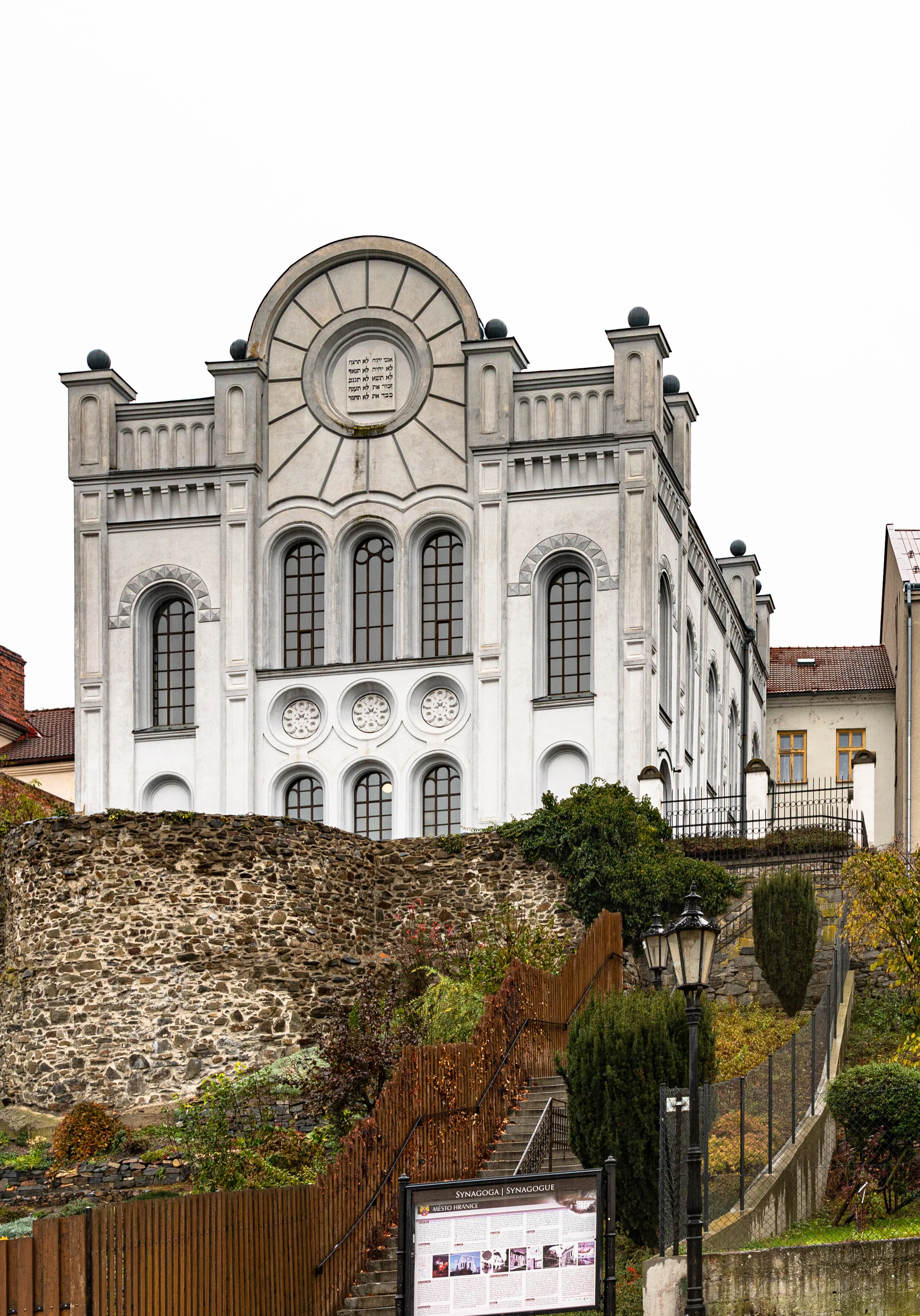Czech Torah
Palm Beach Synagogue has the great honor of being the home of the Sefer Torah number MST#505, which is on permanent loan to us from the Memorial Scrolls Trust located in London. This Torah is dedicated by Rabbi Bernard P. & Dolores, obm, Shoter in honor of their children.
Our Torah came from the small town of Hranice, a town in Moravia, in the eastern Czech Republic, where Jews lived from the beginning of the 17th century. They received the right for a self-governed Jewish quarter in 1637. Besides those 17 houses, they were not allowed to purchase houses elsewhere. The community reached a high 802 people in 1857 (13% of the entire town). They had a significant role in the development of Hranice's industry: a textile plant established in 1844 (the largest factory until the mid-20th century), and distilleries (1827, 1836).
Seven other Hranice Torahs survived the Shoah, cared for by communities in New York, Pennsylvania and California. At Palm Beach Synagogue, the scroll sits in our ark as a reminder to us of the Shoah and our history.
In 1938, the Munich Agreement was signed to appease Hitler, resulting in Germany absorbing the Sudetenland, and Slovakia becoming a separate state. All that was left of Czechoslovakia was Bohemia and Moravia which became a German Protectorate.
After the invasion of 1939, synagogues were closed, laws were regularly passed dehumanizing Jews and non-Czech Jews were deported. Theresienstadt (Terezin) was created in 1941 as a ghetto / transit camp from where Jews were sent to Auschwitz and other death camps. 84,000 Jews were deported and over 78,000 were murdered.
The Jewish Museum in Prague wrote a letter to all Jewish communities in the Protectorate in 1942 instructing them to send all their possessions to Prague. Over 200,000 items came to the museum including 1800 Torah scrolls, books, mantles, silver, etc. They were stored carefully in 14 central buildings
In 1945, there were only 14,000 Jews in the Protectorate of which 100 were children. Although a number of communities were re-established, many Jews emigrated to Israel, the United States and other countries. Following the Communist coup in 1948, synagogues were again closed and Jewish life stifled. The Torah scrolls were moved to an old dam warehouse on the outskirts of Prague, the former Michle Synagogue where their condition slowly deteriorated. The Czech government in 1963 was looking for foreign exchange and asked an American art dealer based in London, Eric Estorick whom they worked with, whether he would buy the scrolls. Estorick contacted a client Ralph Yablon, a philanthropist and founder member of the Westminster Synagogue, who agreed to purchase the 1,564 available scrolls and they were brought to the Westminster Synagogue in London, arriving on February 7th, 1964.
Only a few of the scrolls were in a usable condition, i.e. Kosher. Some could eventually be restored and many would be used as Memorials, silent witnesses of the Shoah. A few months after the scrolls arrived, a travelling Sofer (scribe,) David Brand from Israel, approached the Israeli Embassy seeking a synagogue needing a scroll to be repaired. He was amazed to find over 1,500 scrolls at the Westminster Synagogue when he asked if they had one! Sofer Brand continued working on the scrolls for nearly 30 years.
The Westminster Synagogue set up the non-profit charity The Memorial Scrolls Trust to care for the scrolls that have been allocated to communities and organizations around the world, from Alaska to New Zealand, with over 1,000 in the USA. The Memorial Scrolls Trust museum was created at Kent House, Knightsbridge, London where over 100 scrolls are displayed with over 400 binders and wimpels, one of the largest collections of its type in the world.

